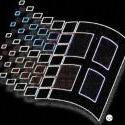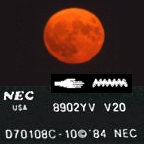Zxian's Achievements
0
Reputation
-
I'm wondering if anyone has any experience with remote task scheduling or job scheduling on Windows machines. My work is using an in-house piece of software for our simulations, and we currently have a system of batch files that we use in order to run the many different scenarios needed for our analysis (people still have to manually run the batch files on each workstation before going home for simulations to run). I was wondering if anyone knew of a scheduling system for us to install on our machines where we could schedule jobs through a master scheduler which would then distribute the individual jobs to available workstations. Ideally, system resource availability would change throughout the day (e.g. 4 out of 8 cores are available for tasks during the day, while all 8 cores are available at night), but that's not strictly a requirement. I've setup similar systems on Linux machines before (using Maui/Torque), but I haven't been able to easily find a similar setup for Windows yet. Any help or options would be much appreciated. All of our workstations are running Windows 7 Enterprise, and our group has local administrative rights to our machines.
-

Migrating server to new hardware - how to best retain all role setting
Zxian replied to Zxian's topic in Windows Server
I might see about restoring the roles to a VM under Hyper-V once the new build is completed. I had been told by a particular Quebecois friend that I shouldn't run Hyper-V on my DC, so that role wasn't added until after everything else was setup. I was mostly planning on replacing the core hardware (mobo/CPU/RAM/SSD), but I should be able to find a spare case and PSU somewhere for a temporary arrangement while migrating. The storage solution would be moved from one system to another. It's my trusty 3ware 9650SE-8LPML card running my storage array. I was planning on disconnecting it from the current system, migrating the main roles over (file services are pretty simple), and then attaching it to the new server once it's up and running again. I should be able to assign the raid controller to be managed by the "guest" VM, correct? This would allow me to keep the file services role completely virtualized, if my understanding is correct. On a similar note, would it be possible to migrate the settings to a VM on the current setup, and then simply export the VM to the new box once it's assembled? -
I'm going to be upgrading my server to some updated hardware and I'm wondering what's the best way of retaining all of my settings regarding the roles I have installed under my server. Will Windows Backup be sufficient if I use it to save the current system state? I'm planning on doing a fresh install of 2008 R2 Standard on the system, since there will also be new storage for the OS. Ultimately, what's going to be the most painless method of getting all my roles back up and running again as they are now? Here is a list of the currently installed roles: AD* DHCP DNS File Services Hyper-V* Print and Document Services Any tips and tricks would be much appreciated. * I know running Hyper-V and AD on the same box isn't recommended due to timesync issues, but this is my home network and hasn't given me any trouble thus far. If there's a really big fat red flag as to why I shouldn't continue doing this, please let me know and I'll reconsider my options.
-
jaclaz is trying to make a bit of a joke, which is sadly being lost in translation here. The simple fact is that hard drive failures can be difficult to predict, and usage characteristics may or may not be the cause of failure in your particular hard drive. I've had many, many hard drives in my systems over the past few years, some of which I use constantly (I've got a pair of hard drives that I write and delete about 1-2TB of data to each week), and others that I only write to occasionally. What jaclaz was trying to say was that, in my situation, it could be any one of my drives that fails next. The ones that I write to more often may last me another 3-4 years, or they may die tomorrow. The fact that I write a lot of data to them is often moot.
-
You have your new computer, which should be considerably faster than your old system. Again, I'd suggest that you don't do anything related to overclocking until you've read through some more material on the subject and understand the various consequences that may happen (i.e. complete hardware failure). If you overclock your system, the manufacturer will NOT replace it under warranty.
-
How long have you been running Windows7? If this is just you having used it for a matter of hours, stick with it for a while (a week at least). Get used to things like Aero Peek (you say you don't care about visual effects - this one is genuinely useful) or integrated search (which is way faster than any third-party solution I've tried on XP). Not having to bother with the Start Menu flying out across the screen is another nice perk as well. If you're going for new hardware get the new operating system. There are hardware features that simply aren't supported well under a 10 year old OS such as XP, and you'll likely get better performance from Windows7, especially if you go with an SSD for your boot drive.
-
I would advise against overclocking altogether until you are more familiar with assembling, installing, and testing your computer. It can be exciting to get into, but at the same time it can lead to system instability or hardware failure.
-

New PC problems - BSOD every day...please help :( Minidumps attached
Zxian replied to TheRed's topic in Hardware Hangout
I was having similar troubles recently after waking my system from sleep or hibernation. Loading StarCraftII or World of Warcraft would usually result in a lockup, followed by a BSOD pointing at the ATI drivers. I'm not sure if ATI's latest drivers are playing nicely with that feature on the latest cards. See if the trouble continues after you stop using sleep/hibernate for a while. Furthermore, run a CHKDSK on your system drive. If, for some reason, the system files became corrupt, it could cause instability like this. -
From the last information I've read, SLI and Crossfire still don't really give you much bang for your buck. You definitely won't get twice the performance. I'd recommend putting that money aside and saving up for a 4870, which will be a significant performance boost. The price difference between the two is currently ~$60CAD, and the 4870 is only going to drop in price with the introduction of the 5000-series cards. Generally speaking, overclocking and water cooling are not worthwhile unless you know what you're doing. I definitely wouldn't worry about them until you're more comfortable with the basic hardware. Furthermore, overclocking a video card won't usually give you the same performance as the "next" level of hardware (there are exceptions, but those are rare).
-

Overclocking my desktop, Is is possible and how?
Zxian replied to adrian2055's topic in Hardware Hangout
You'll see a significant performance increase with games if you make two upgrades. First off is the video card, as CoffeeFiend mentioned. You should be able to find a current mid-range card for about $60 which will deal relatively well with modern games (no settings maxed, but you'll be able to play). The second is your RAM. I would highly recommend upgrading it to 4GB total. You're already running Vista 64-bit, so you won't have any issues of memory "clipping" that occurs in 32-bit operating systems. I would recommend completely replacing the RAM that you have with a good 2x2GB kit. Mixing different RAM is possible, but can sometimes lead to instability issues and is generally not worth the hassle (you end up spending more money than you would have if you just replaced it all). Sadly, with the introduction of DDR3, the prices of DDR2 have increased dramatically, but you'd still be wise to put down the money now. It will greatly extend the lifetime of the system as a whole. -
this seems justification of every bloat today everything is cheap so buy it, nobody cares about efficency and optimisation anymore If you're that worried about Win7 "filling" your hard drive space, the rest of your system's hardware is likely not going to support Win7. My laptop that I purchased in 2002 had a 40GB hard drive. You're also confusing certain concepts. People want "efficiency" and "optimization", but they also want features, reliability, hardware compatibility, backwards compatibility, and speed. Oh, and they want them now. So where do you draw the line? You can't squeeze the vast number of improvements that have been added to Vista and Win7 in the same space on disk as was used with XP. And besides, hard drives are cheap (amongst other things). The purchase of a reasonable computer that can run most of what the common user needs is far cheaper than it was 8 years ago. My mother's previous computer was an Athlon 1GHz, with 256MB of RAM and a 40GB hard drive. Paired with a 15" LCD monitor, the total cost after taxes was well over $1600CAD (that's back in 2000 as well - add inflation to the mix and it's even more value of today's money). A system that's fully capable of running Win7 with enough horsepower to do everything you need, and enough storage to last most people a lifetime would set you back roughly half that price today.
-
Not going to delete this, since it contains the solution to your problem. Other members might browse through this looking for the same answer.
-
I'd actually argue that the "tree way of thinking" isn't how most people work, but how most people were introduced to computers 15 years ago. My parents have never been very computer saavy, but when I've shown them the new ways of navigating through Vista or Win7, they've always asked "Why didn't they think of that in the first place?" My father takes many pictures. By many, I mean roughly 5000 per year. He's always taken his favorite pictures and made separate copies of them in different folders so that he could select those for printing or editing or whatnot. With the picture rating system and tags, he no longer needs to make duplicates of the pictures. To find them again? It's a simple search (which is very quick because of WDS4). Most people hated Vista because of driver incompatibilities and OEMs shipping systems with insufficient hardware. Most people are, sadly, too blind to look at the real source of problems, and were quick to point the finger at Microsoft. Give a man a fish, and he'll eat. Teach a man to fish, and he'll never go hungry. Again, I'll use my parents as examples (they are by any definition, the average 50-60-ish year old users). The "problem" with the various new features in Vista and Win7 is that most people can't figure out how to use them (or try to use them "the old way"). The original thread was in reference to using the classic Start Menu on Win7. Yes... you might know that Solitaire is located under Start->Programs->Accessories->Games, but honestly... why should we be clicking that many times? Start, type "sol", hit enter. Done. My girlfriend recently got a new laptop, which I installed Win7 onto for her as well. She asked me shortly after things were setup, "Where's the User settings in the Control Panel?" My reply: "Press Start, Type 'User', hit enter". Less clicking, less searching, less work for you the user. People are resistant to change, it's as simple as that. Vista was given a wash of bad rap, and now that the humor of the Mac vs PC ads has degenerated to "zomg Vista sucks" (and people are getting sick of them), most people I've talked to are growing to list Vista and Win7.
-
There was some user pruning done a while ago, but only for those members who had zero posts and had not signed in for close to 2 years. Smaller databases means faster browsing for you.






